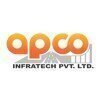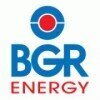Filter interviews by
Ircon International Billing Engineer Interview Questions and Answers
Ircon International Billing Engineer Interview Experiences
1 interview found
(1 Question)
- Q1. Regarding SAP ERP
Interview Preparation Tips
Top trending discussions






Interview questions from similar companies

Civil Engineer Interview Questions & Answers
Hindustan Construction Companyposted on 6 Nov 2019
I applied via Naukri.com and was interviewed in Aug 2020. There were 3 interview rounds.
Interview Questionnaire
1 Question
- Q1. Question is about where you current working ,past working releted question for experience person and some steel BBS question

Site Engineer Interview Questions & Answers
Hindustan Construction Companyposted on 20 Dec 2020
Interview Questionnaire
1 Question
- Q1. Floor Tile thickness, types of tile, company of tile,

Site Engineer Interview Questions & Answers
Hindustan Construction Companyposted on 29 Jan 2021
Interview Questionnaire
1 Question
- Q1. Site related

Site Engineer Interview Questions & Answers
Hindustan Construction Companyposted on 28 Dec 2021
I applied via Company Website and was interviewed before Dec 2020. There were 3 interview rounds.
Interview Questionnaire
5 Questions
- Q1. What a term of Rolling margin on a steel?
- Ans. Rolling margin is a difference weight of steel actual weight and theoretical weight.
- Q2. Initial setting time of cement
- Ans.
Initial setting time of cement is the time taken by cement to harden and attain a particular strength.
Initial setting time is determined by Vicat apparatus
It is the time taken for the cement to lose its plasticity and become hard
The standard initial setting time for ordinary Portland cement is 30 minutes
Factors affecting initial setting time include temperature, water-cement ratio, and type of cement
- Q3. Elongation % of steel fy 500
- Ans.
The elongation % of steel fy 500 is approximately 12%.
Elongation % is the measure of ductility of a material.
It is the percentage increase in length of a material before it fractures under tension.
For steel fy 500, the elongation % is approximately 12%.
This means that the steel can stretch up to 12% of its original length before it breaks.
- Q4. How much bag of cement in 1 cubic meter
- Ans.
The amount of cement required for 1 cubic meter varies depending on the concrete mix design.
The amount of cement needed for 1 cubic meter of concrete varies from 250kg to 600kg depending on the mix design.
The mix design specifies the ratio of cement to other materials like sand and aggregates.
For example, a mix design of 1:2:4 requires 400kg of cement per cubic meter of concrete.
It is important to accurately calculate ...
- Q5. How much density of material Steel Concrete Sand
- Ans.
Density of materials: Steel - 7850 kg/m3, Concrete - 2400 kg/m3, Sand - 1600 kg/m3
Density of steel is higher than that of concrete and sand
Density of concrete varies depending on the mix design
Density of sand can vary depending on the source and moisture content
Interview Preparation Tips

I applied via Company Website and was interviewed before Jun 2021. There were 2 interview rounds.

(1 Question)
- Q1. Question related to civil engineering and related to my past experience.
Interview Preparation Tips

I appeared for an interview in Aug 2019.
Interview Questionnaire
4 Questions
- Q1. How many types of structure
- Ans.
There are various types of structures, including buildings, bridges, dams, tunnels, and towers.
Structures can be classified based on their purpose, design, and materials used.
Buildings can be further classified into residential, commercial, and industrial structures.
Bridges can be classified into beam, arch, suspension, and cable-stayed bridges.
Dams can be classified into gravity, arch, buttress, and embankment dams.
Tu...
- Q2. What is density
- Ans.
Density is the measure of mass per unit volume of a substance.
It is a physical property of matter.
It is calculated by dividing the mass of a substance by its volume.
Units of density include kg/m³, g/cm³, and lb/ft³.
Density can be used to identify substances and determine their purity.
For example, gold has a density of 19.3 g/cm³, while aluminum has a density of 2.7 g/cm³.
- Q3. How many types of density construction
- Ans.
There are two types of density construction: compacted and loose.
Compacted density construction involves compressing the material to increase its density, such as in road construction.
Loose density construction involves leaving the material in its natural state, such as in landscaping.
The type of density construction used depends on the intended use of the material and the desired level of compaction.
Other factors that...
- Q4. Which types of tests construction joint
- Ans.
Tests for construction joints include visual inspection, water tightness test, and load transfer test.
Visual inspection to check for proper joint alignment and sealant application
Water tightness test to ensure no water leakage through the joint
Load transfer test to verify the joint can handle the intended load
Other tests may include pull-out test, shear test, and compression test
Testing frequency and methods may vary d...
Skills evaluated in this interview

I applied via Walk-in and was interviewed before Aug 2019. There was 1 interview round.
Interview Questionnaire
1 Question
- Q1. WHAT IS Fe500
- Ans.
Fe500 is a type of high-strength reinforcement steel used in construction.
Fe500 stands for 'Fe' meaning iron and '500' representing the minimum yield strength of the steel in megapascals (MPa).
It is commonly used in construction for its high strength and durability.
Fe500 steel bars are used in reinforced concrete structures such as buildings, bridges, and highways.
It is also known as TMT (Thermo-Mechanically Treated) s...
Interview Preparation Tips

I applied via Recruitment Consultant and was interviewed in Mar 2021. There were 6 interview rounds.
Interview Questionnaire
2 Questions
- Q1. Leveling layout marking and shuttering work and steel structure
- Q2. Any civil engineer relatad
Interview Preparation Tips

I applied via Campus Placement and was interviewed in Jan 2023. There were 3 interview rounds.

Question had been asked from civil engineering syllabus
(3 Questions)
- Q1. It's selection process was very smooth just easy to medium Technical question had been asked during interview
- Q2. It is based on Student area of interest
- Q3. Basic HR question also had been asked only for confirmation
Interview Preparation Tips
Ircon International Interview FAQs
Tell us how to improve this page.
Ircon International Interviews By Designations
- Ircon International Civil Engineer Interview Questions
- Ircon International Site Engineer Interview Questions
- Ircon International Assistant Manager Interview Questions
- Ircon International Manager Interview Questions
- Ircon International Assistant Manager Finance & Accounts Interview Questions
- Ircon International Network Support Engineer Interview Questions
- Ircon International Engineering Manager Interview Questions
- Ircon International Mechanical Engg. Design Interview Questions
- Show more
Interview Questions for Popular Designations
- Senior Billing Engineer Interview Questions
- Planning & Billing Engineer Interview Questions
- Billing Executive Interview Questions
- Site & Billing Engineer Interview Questions
- Estimation & Billing Engineer Interview Questions
- Medical Billing Executive Interview Questions
- Billing Manager Interview Questions
- Civil Site & Billing Engineer Interview Questions
- Show more
Ircon International Billing Engineer Interview Process
based on 1 interview
Interview experience
Billing Engineer Interview Questions from Similar Companies
|
Works Engineer
110
salaries
| ₹3.7 L/yr - ₹8 L/yr |
|
Civil Engineer
69
salaries
| ₹2.4 L/yr - ₹8 L/yr |
|
Assistant Manager
19
salaries
| ₹7 L/yr - ₹12.5 L/yr |
|
Deputy General Manager
16
salaries
| ₹17 L/yr - ₹27 L/yr |
|
Account Assistant
15
salaries
| ₹1.5 L/yr - ₹4.8 L/yr |

L&T Construction

Simplex Infrastructures

AECOM

L&T Energy Hydrocarbon
- Home >
- Interviews >
- Ircon International Interview Questions >
- Ircon International Billing Engineer Interview Questions












